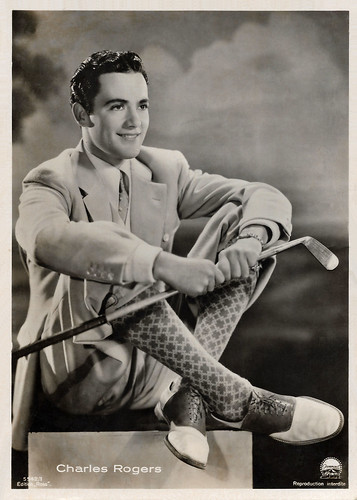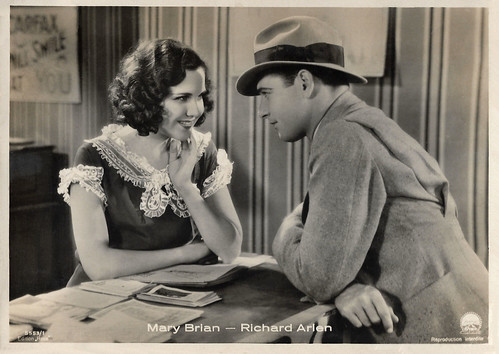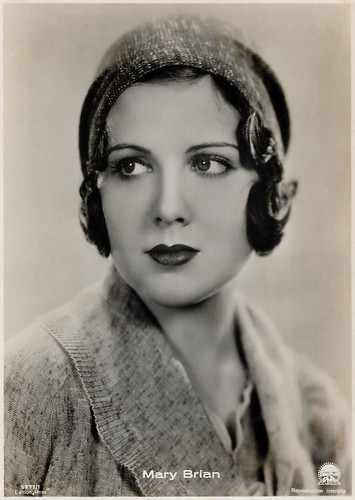
French postcard by Edition Ross, no. F1. Photo: Slavia Film. Danielle Darrieux, as the Japanese character Youki, in the French-language version of Port Arthur (Nicolas Farkas, 1936). Collection: Marlene Pilaete.

French postcard by Edition Ross, no. F17. Photo: Intran-Studio. Collection: Marlène Pilaete. Michèle Morgan.

French postcard by Edition Ross, no. E 4856-1. Photo: Fox. Barry Norton.

French postcard by Edition Ross in the Luxus series, no. 500. Photo: Clarence Sinclair Bull. Greta Garbo in the German version of Anna Christie (Jacques Feyder, 1930).

French postcard by Edition Ross, no. 4340/1. Photo: Paramount. Clara Bow and Richard Arlen in Ladies of the Mob (William A. Wellman, 1928).
Luxus, E and F series
Hans Schnepper writes on the Ross Postcards website that it is impossible to establish when Edition Ross cards were first published. The postcards were made for the French market as the use of 'Edition Ross' and 'reproduction interdite' indicates.
The Edition Ross cards used portraits already published in the German Ross Verlag series, using numbers roughly between 4000 to 8500. That the Edition Ross cards were considered equal to the Ross Luxus cards is evident from the use of the golden Luxus sticker on the backs of the cards, many of which have survived. The size was also in 'Weltformat' (world size), 10,5 x 14,8 cm, and the postcards were printed in high-gloss black (Schwarz-Hochglanz).
The lowest Edition Ross number which Schnepper recorded is Rudolph Valentino, no. 4083/1. Ross Verlag usually didn’t publish postcards of deceased actors, and card 4083/1 in the regular series was published in 1929 by which time Valentino had been dead for about three years. This issue may have been connected with a re-release of one of Valentino’s films, as several European countries re-released various Valentino films in the late 1920s. He writes that the Edition Ross cards were first published somewhere around 1930. The series probably started around the publication of the first German Luxus cards. Our oldest card, no. 4340/1 contains, a still of Clara Bow and Richard Arlen in Ladies of the Mob (William A. Wellman, 1928). According to IMDb, this film premiered in Western Europe in 1929.
Most Edition Ross cards used numbers and portraits from the main Ross Verlag series, but Schnepper also found Edition Ross postcards with E-numbers and with special numbering without a letter. 'Luxus' class postcards from the original Luxus series were, as written, also published as Edition Ross, but most of the Edition Ross cards were printed in black chamois (chambray) instead of the high-gloss black of the German Luxus cards. He also found a few postcards in black chamois and cards on cardboard, in a light sepia tint.
The highest Edition Ross numbers that Hans Schnepper recorded are Lilian Harvey, no. 8431/1 and -/2, both using portraits from I Am Suzanne!, which was released in the US in December 1933. so the Edition Ross series appears to have run simultaneously with the Luxus series. 1933 was also the last year Luxus cards were published. The last Luxus card was no. 803 Lilian Harvey. Schnepper, however, does not mention the F series which must have been produced later in the decade, as card no. F1 contains a photo of Danielle Darrieux, as the Japanese character Youki, in the French-language version of Port Arthur (Nicolas Farkas, 1936).

French postcard by Edition Ross, no. 4505/1. Photo: Metro-Goldwyn-Mayer. Renée Adorée and Ramon Novarro in Forbidden Hours (Harry Beaumont, 1928).

French postcard by Edition Ross, no. 5379/3. Photo: Paramount. Marlene Dietrich.

French postcard by Edition Ross, no. 5542/1. Photo: Paramount. Charles Rogers in Follow Thru (Lloyd Corrigan, Laurence Schwab, 1930).

French postcard by Edition Ross, no. 5545/2. Photo: Paramount. Maurice Chevalier.

French postcard by Edition Ross, no. 5549/1. Photo: Paramount. Mary Brian.

French postcard by Edition Ross, no. 5553/1. Photo: Paramount. Mary Brian and Richard Arlen in the car-racing drama Burning Up (A. Edward Sutherland, 1930).

French postcard by Edition Ross, no. 5597/1. Photo: Metro-Goldwyn-Mayer / Clarence Sinclair Bull. Greta Garbo in Anna Christie (Jacques Feyder, 1930).

French postcard by Edition Ross, no. 5619/1. Photo: Metro-Goldwyn-Mayer. Bessie Love.

French postcard by Edition Ross, no. 5971/1. Photo: Paramount. Mary Brian.

A curiosity. This unnumbered Edition Ross postcard contains a Portuguese text (translated): "From 16 May, the most sympathetic film actor-singer José Mojica, who at the Trindade presents his excellent films of Fox, will perform and sing in Spanish in 'O bandido mascarado." Cinema Trindade was and is a cinema in Porto, Portugal. The Masked Bandit may refer to Mojica's Dick Turpin film El caballero de la noche (James Tinling, 1932). Photo: Fox. Marlene Pilaete: "Despite the mention of "Edition Ross", this card was not produced for France. I have several cards in this series and they all were specially created for the cinema Trindade in Porto, not for the French market. They were made in the first half of the 1930s, earlier as the F series postcards. And if you look closely at your Mojica card, you will notice a difference in the printing quality. The 'Cinema Trindade' postcards aren't the same high quality as the F series postcards. The quality of the Cinema Trindade cards is better than the 'Program von Heute' cards, but less good than the usual Ross postcards.
Source: Hans Schnepper (Ross Postcards), Ross Postcards and IMDb.
With thanks to Jean Ritsema, Marlene Pilaete and Ivo Blom! Our Ross Verlag Tribute will be continued next week and please, remember to check out the Ross Verlag Movie Stars Postcards website. This post was last updated on 4 January 2025.
No comments:
Post a Comment